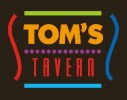Joe Baker had a dream just like Martin Luther King. The Doctor died in Memphis, but the Saints came marching in. And as the decade ended, when man stood on the moon, Joe dreamed again, to have the Club atop the A Grade soon.
In 1960, Joe Baker was appointed as the first Chemistry lecturer at the then University College of Townsville. The University college was officially opened on 27th February 1961 and by that time Joe s chemistry skills had already allowed him to discover the formula for a new club Fun x Friendship = Uni Rugby League. Eat your heart out Einstein. On the 19th March 1961, Uni Rugby League played their first game with Bob Ness leading out the side. A fifth place finish for the year was just a trial run for the years to come.
Joe got a lot of help in those early years from Alf Popham who managed most of the teams and had a lot of TRL connections, and Dr Kiernan Skip Dorney, who not only provided the important medical skills, but also availed his home for the many premiership after parties held during the decade. In later years Alf and Skip were awarded life membership. Also keen to help was Fred Clacker Beasley, who s son Warren played for the Junior teams.
As the college grew so did UNI Rugby League and 1962 saw two junior teams entered into the competition. In only the second year as a Club, the UNI Blue took out the premiership with Ronnie Brennan carving up the opposition and Geoff Nott practically unstoppable. With other players such as, Bob Schofield, Warren Beasley, Kevin Gillman and Joe Abercrombie more success followed. While The Beatles sang it s going to be a hard days night , that s exactly what the UNI boys were doing while celebrating the 1964 and 1965 junior premierships and then the reserve grade premiership of 1966 in their first year fielding a team in that grade.
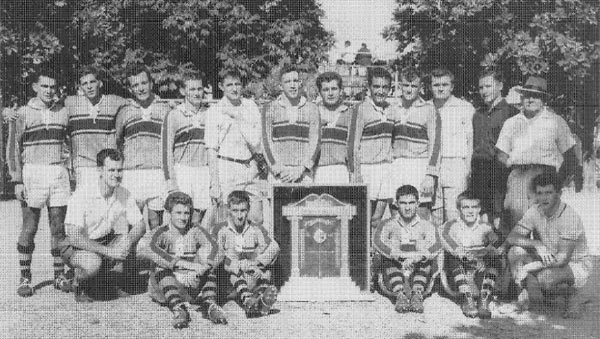
1964 Junior Premiership Tea
Another player involved in those premierships in the early 60s was Peter Higgins, who later became a life member. In 1962, during comm week , Higgo was involved in one of the most significant pranks in JCU history. He and seven other students painted the first Saint on Castle Hill, that has since become a cultural icon for the City. You say potato, I say potarto. You say tomato, I say tomarto. You say graffiti, we say that s art mate!
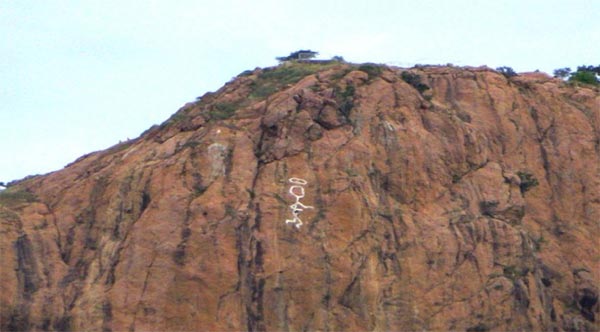
The modern day Saint, with Higgo s original further up and to the left
During the 1960s, in similar vein to JFK, the question was ask not what your Club can do for you, but what you can do for your club . That was the attitude around the place which was built on playing footy and having fun. Joe was a cunning fox and knew that even though the way to a man s heart was through his stomach, the way to improve a man s performance was to have some girls around.
The girls had a significant involvement in the Club. They conducted all the fund raising and also helped out a training. Their reward was to be taken along on the end of season trip to Brisbane where the team played another Uni side from the city. The team and entourage travelled by train. The trip was long, but a great opportunity to further strengthen friendships and perhaps also a few romances.
It would be interesting to see how current day officials would view a similar circumstance, if a Club took a bunch of young girls with them on an end of season trip. Oh, the controversy!! And what would the headlines be?
PLAYERS SMUGGLE GIRLS ONTO END OF SEASON TRIP. The NRL begins an investigation.
The Train Trip was funded by selling a raffle of groceries and grog in a pub crawl from the Rising Sun Hotel to the Criterion on the Strand. (Did anyone ever remember to actually draw the raffle?) They could only afford seats, no sleepers, and so the floor made for a good bed. Despite the lack of comfortable bedding, it didn t stop the team from firing on the field and the highlight was victory over the Under 21 Brisbane Representative Team at Graceville Oval under lights.
The Club enjoyed tremendous support in the early years from the University administration, who saw the Rugby League team as an avenue to promote the University within the community. The success of the club mirrored the growing success of the institution itself and so the University and UNI Rugby League were mutually beneficial to each other.
As the 60s drew to a close the Club had developed a strong core group of players, such as Bill Phillips, Keith Shiels, Dick Carthew, Rob Williams, Ross Kapitske, Ernie Poole, John Meecham, Dan Simpson, Peter Shaw, Ray Norbury, Greg Lennon, Mike Hawney, and, Syd Dunford who suffered a broken neck in a latter year.
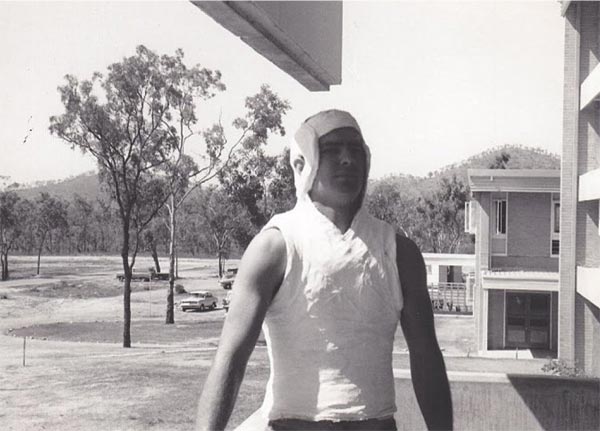
Syd Dunford with his new suit. Scratch my back will yah
Following the 1968 Reserves win and 1969 Under 19s victory, the club decided that the case was strong for entry into the A Grade competition. In late November/early December 1969, the club was given only 48 hours notice to draft a new club constitution to meet formal requirements and present a case to the TRL board.
UNI sent in their big guns in future life members, Joe Baker, Kiernan Dorney, Alf Pophan and Kett Kennedy, who attended the meeting at the WEA’s clubhouse to present the case for UNI s admission into A Grade.
Ben Bloom was TRL president and Reid Anderson the secretary. The debate on admission was vigorous with some of the board members strongly against “amateur long-haired young poofs” playing against men in a man’s game.
Bluey Raleigh, the Central’s Patron, and Butch McCrohan from Souths supported UNI and it was the referee’s vote through Tony Camilleri (the one-armed “one-eyed” whistle blower as he was affectionately called) who was most vocally in support and urged on Ron West, to secure the favourable vote.
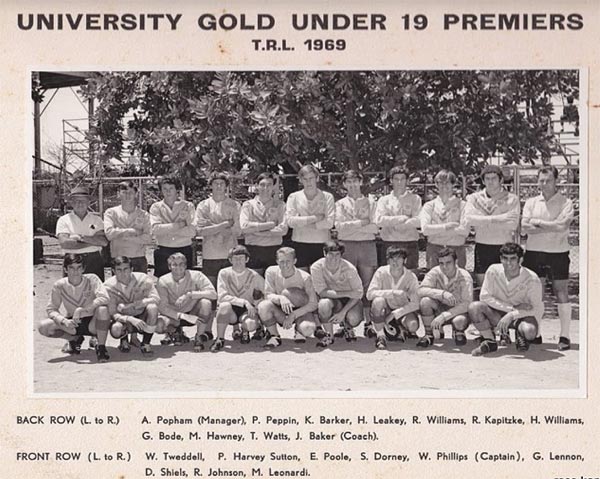
The 1960s had been an amazing start for the Club with a total of four junior premierships and two reserve grade premierships. Tradition had been created and foundation stones set in place for a bright future. The Club looked forward to a 70s decade full of promise and excitement. They were not to be disappointed.
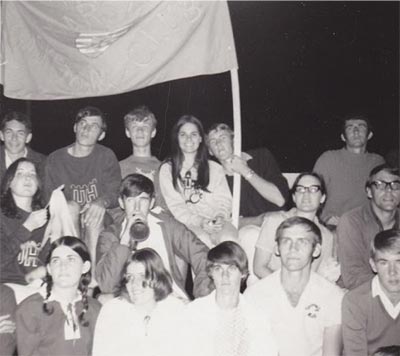
UNI supporters at the 1969 Grand Final







